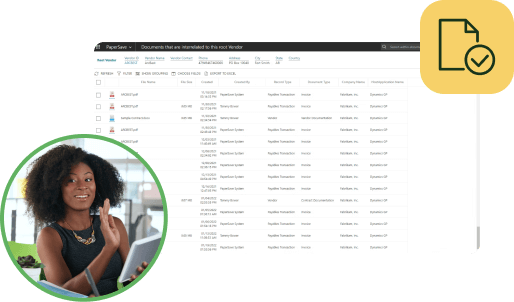
Wadih Pazos
Wadih founded both PairSoft and PaperSave. He is an avid technologist who specializes in streamlining operations and maximizing productivity.
View all posts by Wadih PazosWadih Pazos

Most organizations aren’t doing anything to address paper usage either. A blog post by Association for Information and Image Professionals President John Mancini said that a mere 35 percent of businesses have a specific plan in place to attempt to reduce paper usage.
This lack of institutional will to remove paper from day-to-day processes is causing companies to waste both time and money. This dependence also leads to mistakes and errors that could be corrected with a paper-free system.
Paper is expensive. Though one ream is not a tremendously large investment, it just scratches the surface of the cost of using paper as the foundation of workflow. A paper-heavy process means the financial burden of paying for – and maintaining – printers, fax machines and copiers. According to Referral MD, Chanel No. 5, one of the world’s most expensive perfumes is cheaper per ounce than the ink inside one of these machines.
It also costs money to keep and file all of the paper a business accumulates. The source noted that it costs about $20 per document for filing and storage, counting the employees and the office space needed to house it. As that paper keeps piling up, the costs associated with it go up as well. The source also estimated that for every 12 filing cabinets a business has, an extra employee is needed to deal with filing and searching through records.
An electronic document storage system that uses the hard drive of a computer, a network drive or the cloud is much cheaper and easier to maintain. Storage to hold tens of thousands of files costs only a few dollars per month. A business with a large number of stored records in filing cabinets can also save money by using less physical space once those records are transferred to electronic ones. Once the filing cabinets are rendered unnecessary, a company might be to capitalize better on the space they have.
The wasted money and employee time is not the only reason to consider switching to a paperless process in the office. Paper filing leads to more errors and security risks than the electronic equivalent.
Referral MD said that 15 percent of all documents are misfiled, and 7.5 percent of them are never found again. Those numbers might not seem like much, but for a company that deals with criminal records or health information, it is a scary reality that a percentage of their records will be lost to sloppy filing.
A computerized filing system will eliminate many of these issues. In a paperless office, documents coming into the business are scanned upon arrival and placed into the electronic database where they can be accessed by any employee that needs them. Files created in this way are stored automatically and alphabetically by the system, and are therefore much easier to retrieve.
Automated workflows empower your team to focus on larger, more complex initiatives without having to think about small processes.


Many organizations start with manual receipt handling, fragmented card feeds and slow AP processes. Implement AI agents to auto-capture receipts, route approvals, enable punch-out buys and post to the ERP.
Result: faster batching, fewer errors and cost savings. “This saves us hours every month.”
Many organizations face slow, paper-heavy AP and fragmented procurement that waste time and inflate costs. AI Agents can automate approvals, PO matching and record sync to improve speed, accuracy and control. Client quote: “It freed up hours and made our process reliable.”
Operational drag and rising costs slow growth: teams waste time on manual tasks, misaligned priorities and opaque processes. AI Agents help automate routine work and coordinate actions across teams. “We’ve lost time to repeats and handoffs,” says a typical client.
Companies struggle with manual procurement, fragmented approvals, and costly integrations that slow growth and obscure spend. Our AI Agents streamline requisitions, POs, and invoice matching to cut manual work and improve visibility. “We were wasting time and missing insights,” says a client.

Many teams start with fragmented PO/AP systems, manual matching and delayed financial reporting. Deploying AI agents to automate PO checks, real-time encumbrance tracking and invoice matching reduces processing time and errors, delivering live budgets and faster closes. “Finally, we can see current balances and approve instantly.”
Many companies juggle growing invoice volumes and legacy systems. They struggle with manual processes, compliance gaps and limited headcount. Our AI Agents automate integrations, enforce rules and surface exceptions. The typical outcome: faster closes and measurable ROI. “We stopped chasing invoices.”